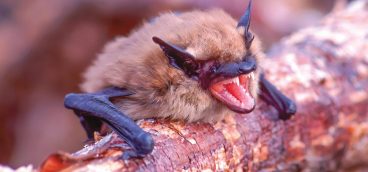Spring Blooming Plants Blooming in Fall

It’s the holiday season and my rural Pennsylvania town is bursting with the signs of Christmas: wreaths hung on doors, trees strung with colorful lights, a creche erected in the town square — and spring-flowering plants in bloom.
My forsythia is blooming a bright yellow. White lilac flowers are just dying back. Pink magnolia buds have recently faded.
“This is the first year I’ve seen honeysuckle bloom in fall,” said Mason Heberling, a botanist at the Carnegie Museum of Natural History in Pittsburgh. And forsythia “is extra weird this year,” he said. “Other botanists — in person and online — are talking about this too.” Such untimely blooms have caused Heberling to pause and ask himself: “What season is it?”
What season indeed! I am not a botanist, just a gardener and an observer of plants on a farm in the Appalachian foothills, but in 35 years, I’ve never seen all these plants rebloom in fall.
The lilac was an odd sight, so strange that those of us on the farm mentioned it to each other: did you see the lilac in bloom? Little white tufts resembling cotton balls sat atop nearly leafless branches. Most of the leaves had turned color and fallen to the ground, but the flowers were blooming.
It was a partial, not a full bloom, what Heberling called “a muted response,” but still, it was unnerving to see plants that normally flower in spring bloom again at Thanksgiving — and now, nearly Christmas. It felt a bit out of science fiction thriller, but I think I was just witnessing climate change in my own backyard. I think many people won’t believe climate change until they too see it in their own backyards.
“False spring,” Heberling called it. “These plants are confused for a variety of reasons.” Non-native plants are the rebloomers, Heberling said. Most plants respond to three main phenological cues that trigger bud burst in spring: duration of winter cold (chilling requirements), changing day length, and warming temperatures. When any one of these three is out of whack, strange things can happen to plants. And since non-natives require less chilling than our native plants, they may get tricked more easily. (Our native plants, by contrast, have evolved to avoid frost during unpredictable spring temperatures.)
Take the non-native lilac, for instance. The shrub produces new buds in early summer after spring flowers have faded and holds onto those buds over winter. But when the plant is faced with environmental stresses such as drought or heat, it can go into dormancy early. Then, when cooler temperatures arrive in autumn, plants are fooled into thinking it is spring and begin to bloom.
Last summer’s weather offered its fair share of drought and heat, now “the new normal.” We had nearly three weeks with no rain at all and then a big flood in August, which is usually our dry month. Planet Earth saw the hottest meteorological summer on record in 2023 and while I could find no statistic of Pennsylvania breaking any records, we had our fair share of heat.
Winter temperatures are warmer too, which was made clear November 15 with the newly issued USDA Plant Hardiness map. To determine gardening zones, the United States Department of Agriculture measured the coldest temperature on the coldest night of the year over a 30-year period and the new map reflects 2.5 degree F (1.4 degree C) warmer temperatures since the map was last published in 2012. About half our country shifted warmer a half zone, including mine, which went from a 5b to a 6a.
“This is a big deal,” Heberling said. “Climate is changing to the point that we can plant garden plants that can only grow in milder winters that we couldn’t plant before. And more significant, that also means that native plants and introduced plants can also shift. Things are up in the air as we enter new climate space.”
The general consensus is that my reblooming shrubs will not be harmed. Those fall blooms, however, will not rebloom in spring, which might make next year’s display less spectacular. The scientists I spoke to said there’s still a lot they don’t understand about how changing climatic conditions will affect plant blooms, but Heberling said, “I do suspect we will have more oddities in the timing of flowering as weather and climate become more irregular.”
“Enjoy the fall flowers,” he said.










